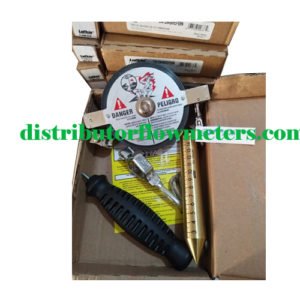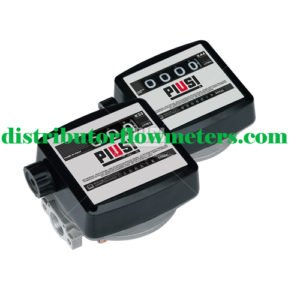Deskripsi
NIST Traceable Calibrated Thermometers for Field Verification Checks of PET Thermometers
Meets API Chapter 7 requirements
The American Petroleum Institute’s (API) publication ‘Manual of Petroleum Measurement Standards’ (Chapter 7, Section 3) ‘Static Temperature Determination Using Portable Electronic Thermometers’ (First Edition, July 1985) offers specific recommendations for recalibration and verification of your PET (portable Electronic Thermometers). The thermometers listed below meet those specifications. The following section, has been reprinted, with permission, courtesy of the American Petroleum Institute, as a customer service.
7.8.2 Initial Calibration
Before initial use, and at least once a year thereafter, each portable electronic thermometer shall be re-standardized in a laboratory or other qualified calibration facility. The thermometer shall be re-standardized by comparing it at three or more temperatures with either a National Bureau of Standards (NBS) (ICL note: NBS is now NIST) certified thermometer or an equivalent thermometer with accuracy traceable to the NBS in accordance with the manufacturer’s instructions. These standardization checks will ensure that accuracy is maintained within the limits given in Table 3.
8.2.1 Field verification
Before each use, or once per day (whichever is less frequent), portable electronic thermometers should be spot checked by comparing the ambient reading against an ASTM glass stem thermometer in liquid. If the readings differ by more than 0.5 °F (or 0.25 °C), the portable electronic thermometer should be re-standardized before it is used for custody transfer.
8.2.2 Monthly Verification and Inspection
On a monthly schedule, the portable electronic thermometer should be checked at two or more temperatures near the ends of its range against an NIST certified thermometer or an equivalent thermometer with accuracy traceable to the NIST. Make this check by placing the two thermometers side-by-side in a circulating bath and leaving them undisturbed for at least 10 minutes before making comparative readings. Alternately, the ice point and boiling point of fresh water may be used for accuracy check. The boiling point of fresh water must be corrected for altitude. If the thermometer readings differ by more than the tolerances listed in Table 1, the thermometer should be re-standardized (see 7.8.2)
Mercury Thermometers With Calibration
| ASTM No. | Catalog No. | Application | Range | Div | Length | Immersion | ASTM specified test points |
|---|---|---|---|---|---|---|---|
| 63F | 10063F-C | Reference Standard | 18 to 89 °F | 0.2° | 379mm | total | 20, 32, 50, 70, 88 °F |
| 64F | 10064F-C | Reference Standard | 77 to 131 °F | 0.2° | 379mm | total | 32, 80, 95, 115, 130 °F |
Mercury Thermometers Without Calibration
| ASTM No. | Catalog No. | Application | Range | Div | Length | Immersion |
|---|---|---|---|---|---|---|
| 63F | 10063F | Reference Standard | 18 to 89 °F | 0.2° | 379mm | total |
| 64F | 10064F | Reference Standard | 77 to 131 °F | 0.2° | 379mm | total |
Non-Mercury Thermometers With Calibration
| ASTM No. | Catalog No. | Application | Range | Div | Length | Immersion | ASTM specified test points |
|---|---|---|---|---|---|---|---|
| S63F | 100S63F-C | Reference Standard | 18 to 89 °F | 0.2° | 379mm | total | 20, 32, 50, 70, 88 °F |
| S64F | 100S64F-C | Reference Standard | 77 to 131 °F | 0.2° | 379mm | total | 32, 80, 95, 115, 130 °F |
Non-Mercury Thermometers Without Calibration
| ASTM No. | Catalog No. | Application | Range | Div | Length | Immersion |
|---|---|---|---|---|---|---|
| S63F | 100S63F | Reference Standard | 18 to 89 °F | 0.2° | 379mm | total |
| S64F | 100S64F | Reference Standard | 77 to 131 °F | 0.2° | 379mm | total |





